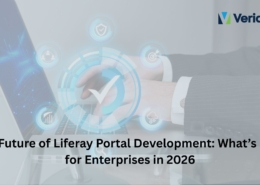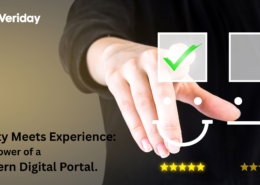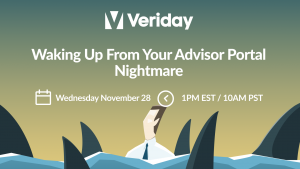
There are countless benefits documented on how a portal has been proven to increase employee and business productivity and efficiency. Additional outcomes from a portal include improved overall communications, collaboration, and knowledge management. Yet many portals suffer from low user adoption and continue to fail. The portal created for your organization many years ago isn’t going to cut it anymore. With ongoing changing work dynamics of the new generation of employees, the way in which people work is also changing. Organizations and executives may adapt to the change in work dynamics but forget to modernize their business tools; creating a productivity disconnect between the new workforce and the old methods/tools.
This article will cover 5 common advisor portals that clients were experiencing along with the solutions that are essential in fixing these problems.
Problem #1 Enterprises Lack a Governance Model
Who manages the advisor portal in your organization? What team is responsible for updating it and ensuring content is accurate? Deciding on who owns the portal can be one of the most difficult tasks for a company. The success or failure of a portal is often dependent on who takes ownership. The ownership of the portal can often lead to a successful one or unsuccessful one.
Complicating this process is the fact that some organizations will assign portions of the intranet to various groups/departments (e.g. Corporate Communications owns the content, IT owns the technology) meaning that gray areas can arise when delegating responsibilities.
Solution: Connect with the key people in your organization to define who makes what decisions, who is accountable, and how each group collaborates to manage the portal effectively. Having a senior executive that is an advocate for the portal and oversees the portal governance is crucial for its success and can bridge the gaps between groups/departments.
Problem #2: Portals are Outdated and Lack Easy to Use Functionality
When advisor portals lack fresh, updated content, and are difficult to use; this results in:
• Employees providing inaccurate or outdated information to prospects or clients.
• Advisors being unable to easily access the information and tools they need when with a client. This creates a poor client experience, which reflects poorly on the advisor and organization.
• The portal becoming something advisors lose trust in.
Solution: Leverage the people who will be using the portal every day. What is important to them? What tools, calculators, documents do they need to access easily? What tasks do they do multiple times a day when meeting with clients that should be easily accessed? Identifying how content is created, stored, accessed and how often it is used in a formal portal content plan can help resolve these problems. By properly solving problem #1, organizations can often avoid problem #2.
Problem #3: Organizations Underestimate the Cost and Complexity Involved in Creating a New Portal
Are the right people involved with the project? Was enough research and planning done to understand the level of complexity that creating a new portal entails? Without proper collaboration across teams and departments, people spend time constantly re-evaluating the costs and resources needed to execute the plan efficiently.
Solution: Work with a third-party company who is an expert in the portal development and project management. It can be difficult to predict the timelines and the challenges that can arise when creating a new portal but having a plan that is created from the start can help make predictions more accurate and overcome challenges that come up. Create a goal-oriented strategy that clearly identifies what business objectives will be met with the new portal.
Problem #4: Organizations Plan a New Portal Without Considering the End-User
The people at the forefront of creating a new portal are often technology leads or developers. These individuals might not be aware of the challenges with the current portal and the needs of the end-users. Understanding the end-users is the most important factor in creating a successful portal. Without the end-user in mind, advisors will not use it and resist change if it won’t help them solve day-to-day problems or help them save time with tasks they do often.
Solution: The end- users are the most important group of people to ensure the success of the portal. Take the time to gather the business requirements from advisors before any design or technology is implemented. This could entail sending out a survey to advisors, focus groups, and interviews to better understand what is important to them in an advisor portal.
Problem #5: Lack of Training
After a new portal is launched, often organizations wonder why there is such a low adoption. Without a proper education and training plan, advisors won’t care to use the new portal. If advisors are not properly trained and educated on how to use the new portal and see the benefit, they will get frustrated trying to figure out how and not use it.
Solution: Creating a plan for your portal development and execution is important but having a roll-out plan is just as important. Having portal advocates who talk and share exciting news about the new portal can help get advisor teams excited about a new tool that will make their job easier.
These problems are very common in organizations that we work with. Watch the webinar recording to learn how one wealth management company created a new advisor portal and significantly transformed the way their advisors serve their clients.
Explore more solutions to troubled portals
Watch our latest webinar











